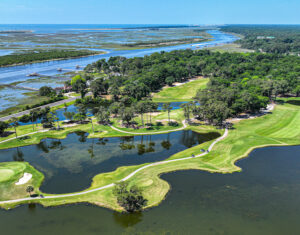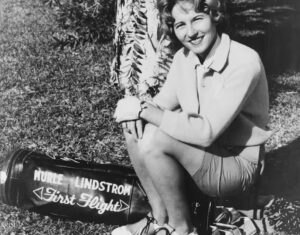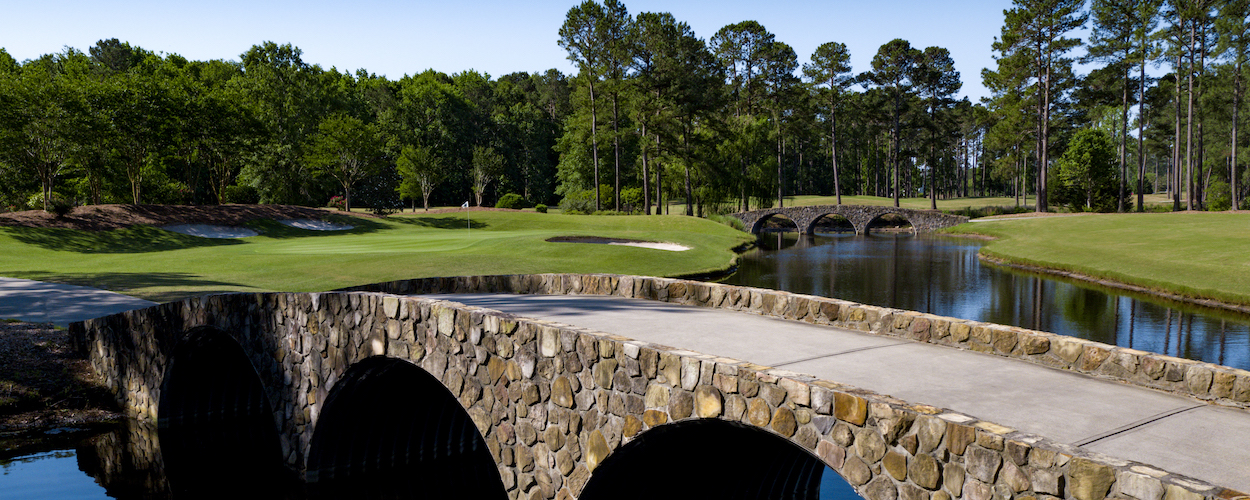
Myrtle Beach Courses to Put You in a “Major” Frame of Mind
The phrase “championship caliber” is often is used to describe courses in the Myrtle Beach golf marketplace. But what does it take to earn such a lofty description? We’re not saying that the courses we’re profiling here are the equal of each of this year’s four major championship venues on the PGA TOUR – but if you’re looking for traits reflective of them, you’ll find plenty at each of these Grand Strand courses.
One of the most notable three-hole stretches in all of Myrtle Beach, World Tour Golf Links’ Nos. 4, 5 and 6 on its Championship side are meant to pay homage to Augusta National Golf Club’s famed “Amen Corner,” which so often plays a vital role in determining The Masters’ champion each April.
Like Augusta’s No. 11, No. 4 at World Tour is a long par 4 – one of the most difficult holes on the course – with an approach shot played down a steep hill to a green protected in the front and left by an ever-present water hazard. Given the length of the hole and the difficulty of the approach, hitting the green in regulation in route to a par at No. 4 is a real accomplishment.
Next, No. 5 – much like the par-3 12th at Augusta – is a relatively long par 3 played over World Tour’s very own version of Rae’s Creek. The hole even has a replica of the Hogan Bridge (pictured, above) for players to cross and pose for keepsake pictures. Just as with Augusta’s No. 12, players here must be mindful of the wind’s strength and direction in order to pull the right club and give themselves a chance for birdie.
Finally, No. 6 at World Tour is built just like Augusta’s par-5 13th: a reachable, dogleg par 5 that snaps around the corner to the left, leaving players a second shot into a green protected by a creek in the front. No doubt, getting through World Tour’s version of “Amen Corner” is a real challenge, just as it is on Masters Sunday.
In addition to World Tour, other local courses like Litchfield Country Club, Caledonia Golf & Fish Club and Willbrook Plantation evoke visions of April at The Masters with some stunning springtime azalea bloom of their own, bringing colorful life to golf in a way that you won’t want to miss!
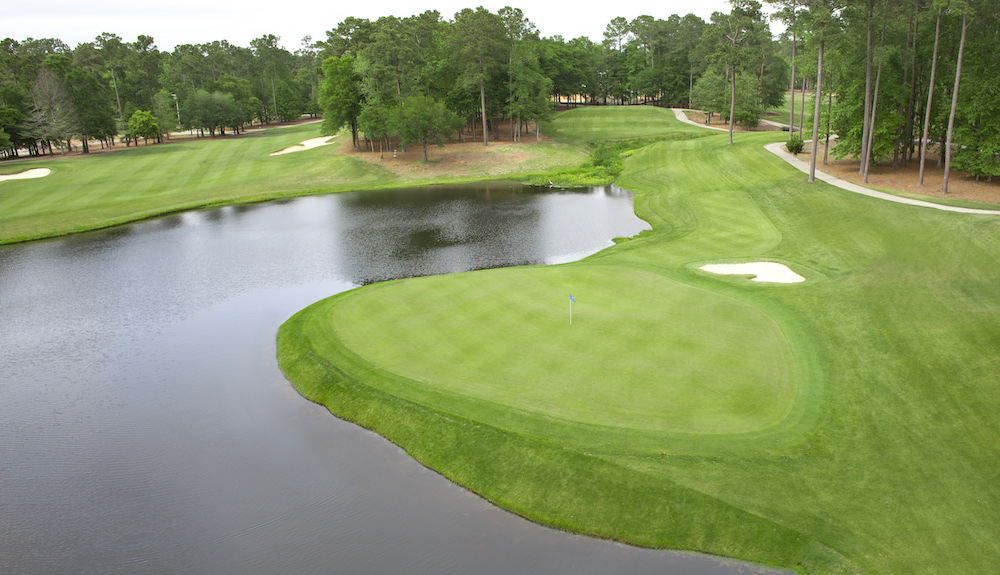
This season’s second major, the PGA Championship, takes place at TPC Harding Park in San Francisco, a course that was substantially renovated in 2005 to better suit it for PGA TOUR events. Against the stunning backdrop of cypress tree-lined Lake Merced, Harding Park’s newly improved layout features soft bunkers and graceful, undulating fairways. Meanwhile, an additional 400 yards was added to the course and it also underwent a greens renovation, making for a championship-caliber golf facility ready for PGA TOUR action. In other words, the new Harding Park was built out specifically for professional players.
The same can be said for Harding Park’s Tournament Players Club counterpart at TPC Myrtle Beach, a course fit for the pros because it was crafted for and by professionals. TPC Myrtle Beach’s challenging layout offers everything players look for: picturesque, marquee holes from tee to green, meticulously shaped hills and mounding, perfectly conditioned greens and an abundance of native wildlife. Additionally, tall southern pines, rustic wetlands and demanding par 3s require frequent forced carries, and missing it in the wrong spot can spell real trouble for players. With a layout like the one TPC Myrtle Beach boasts, it’s no wonder it was the host of the 2000 Senior Tour Championship and is the current host of the Dustin Johnson World Junior Golf Championship.
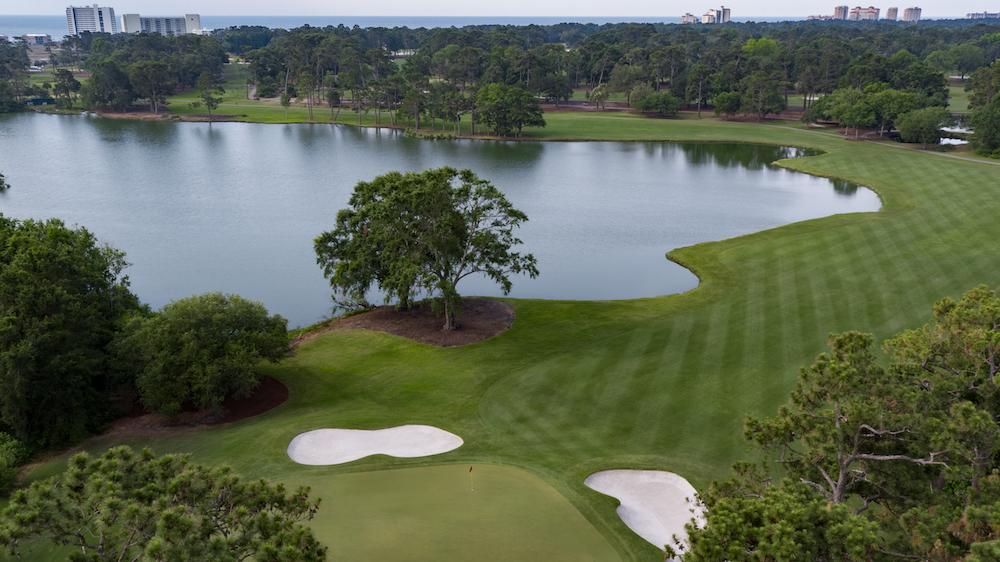
June’s major championship this year, the U.S. Open, visits Winged Foot Golf Club in New York, a course with a real history of tradition and excellence that has translated to hosting numerous marquee championships. It wasn’t long after the first foursome teed it up in 1923 that the club hosted its first major, the 1929 U.S. Open, won by Bobby Jones in a 36-hole playoff. Four other U.S. Opens have been contested at the club’s West Course, along with two U.S. Amateurs (sharing the East Course for qualifying), one PGA Championship and one Walker Cup. Indeed, Winged Foot is the ultimate test of strategic golf, and long enough to have humbled virtually every golfer to have stepped foot on it.
A similar lengthy history of tradition and excellence exists at The Dunes Golf & Beach Club, considered by many to be the best golf course in all of Myrtle Beach and one of the top resort courses in America. The Robert Trent Jones design ranked 34th in Golfweek’s 2019 national list of resort courses and is continually praised for providing a truly special experience. No. 13 is the club’s signature hole, and has received recognition as one of the best golf holes in the country. A stunning par 5, it is nicknamed “Waterloo” for the lake that comes into play. Few courses in existence utilize natural terrain the way The Dunes Club does, and the result is so magnificent that the course has played host to numerous professional events, including six Senior PGA Tour Championships, one U.S. Women’s Open and the finals of the PGA TOUR’S Q-School.
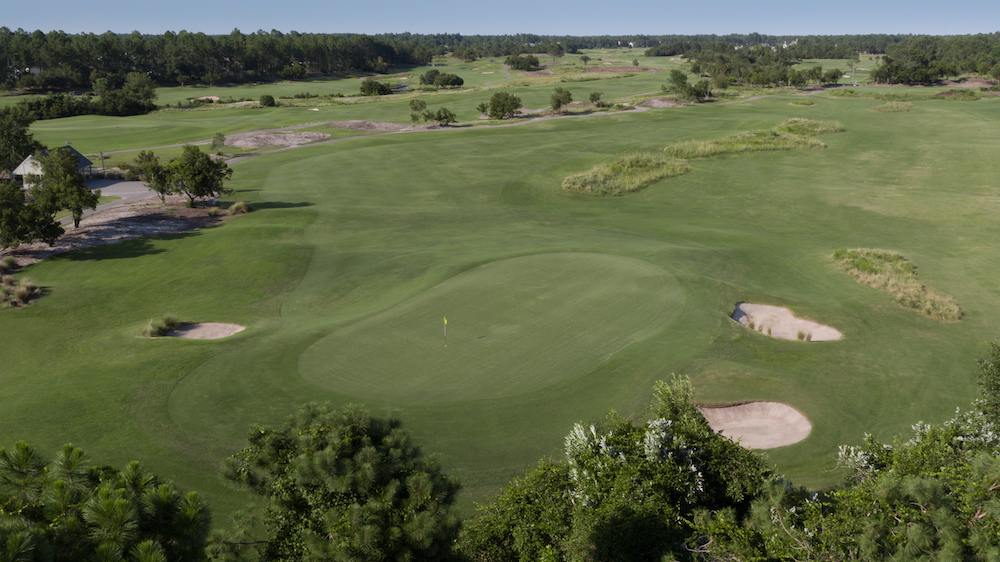
This year’s final major is The Open Championship at Royal St. George’s in England, one of the iconic “big dogs on the block” when it comes to European links-style golf. The club was founded in 1887 in a setting of wild duneland. Many holes feature blind or partially blind shots and, in addition, the course possesses the deepest bunker in championship golf, located on its fourth hole. Expect to see the best players in the world struggle simply to get their balls out when they find this bunker during the tournament.
One course in the heart of Myrtle Beach that honors such links design is the Heathland Course at Legends Golf Resort. Heathland was built with fun and playability in mind. Wide-open fairways from almost every tee present generous driving opportunities, and though bunkers are placed throughout the course, there are fewer water hazards than at other facilities in Myrtle Beach, so long as players avoid the stream that meanders its way through the back nine. This lack of water, along with there being very few trees, allows for immense, unobstructed visuals overlooking several holes simultaneously, and, as you’d imagine at a links-style course, Heathland’s greens complexes are some of the largest in the area and feature significant undulations.


